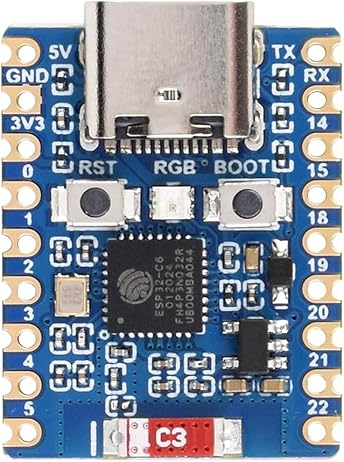
Understanding Conception Électronique in Modern Engineering
The world of electronics is evolving rapidly, and at the heart of every breakthrough lies a critical phase known as conception électronique. Whether it’s the design of everyday consumer electronics, high-performance computing devices, or IoT systems, electronic design is what transforms ideas into functional, tangible reality.
In this in-depth guide brought to you by Shop4makers.com, we’ll explore the key components, techniques, and best practices involved in the process of conception électronique. This article is designed for engineers, hobbyists, and innovators who want to dive deeper into the fascinating journey from concept to circuit.
What Is Conception Électronique and Why Is It So Crucial?
Conception électronique, or electronic design, is the process of creating electronic systems and circuits to fulfill specific functional requirements. It’s a discipline that blends creativity, logic, and technical know-how, requiring a deep understanding of components, schematics, and simulation tools.
1. The Core Phases of Conception Électronique
To fully understand conception électronique, it’s important to break it down into stages:
- Needs Analysis: Identifying what the system needs to do.
- Specification: Defining voltage levels, communication protocols, power constraints, and more.
- Schematic Design: Drawing the electronic circuit diagrams.
- Simulation & Testing: Ensuring the design will work using software tools like LTSpice, Proteus, or Multisim.
- PCB Design: Translating schematics into a physical board layout.
- Prototyping: Building the first version to validate functionality.
- Iterative Improvement: Making design refinements before final production.
Each step plays a vital role in ensuring the performance, efficiency, and reliability of the end product.
Key Components and Tools in Conception Électronique
Whether you’re designing a simple LED driver or a complex microcontroller-based device, several tools and components are central to successful conception électronique.
2. Essential Hardware Components
Here are some building blocks of electronic design:
- Resistors, Capacitors, Inductors: Passive components that manage voltage, current, and frequency response.
- Semiconductors: Including diodes and transistors, they form the core of logic and amplification.
- Integrated Circuits (ICs): From op-amps to microcontrollers like Arduino and ESP32, ICs allow complex tasks on compact boards.
- Connectors & Interfaces: For power supply, USB, wireless communication, etc.
- Sensors & Actuators: They allow your system to interact with the physical world.

3. Software Tools for Conception Électronique
Professional-grade electronic design requires sophisticated software, including:
- EDA Tools (Electronic Design Automation): Such as KiCad, Eagle, Altium Designer.
- Simulation Software: To test circuit behavior under various conditions.
- Firmware Development Platforms: Like Arduino IDE, STM32CubeIDE, or MPLAB X.
- Version Control: Git-based tools to manage revisions in team environments.
Using these tools speeds up development while minimizing costly errors in the prototyping phase.
Advanced Strategies in Conception Électronique
4. Design for Manufacturability (DFM)
Once a prototype is working, you must consider the manufacturing phase. DFM ensures your design is cost-effective and easy to assemble in mass production. This includes:
- Choosing common component sizes.
- Minimizing complex routing.
- Keeping component spacing optimal for pick-and-place machines.
5. Power Management Techniques
An often overlooked aspect of conception électronique is efficient power design. Whether it’s a battery-operated sensor or a high-power amplifier, energy efficiency ensures stability and longevity. Strategies include:
- Using low-power components.
- Implementing power gating techniques.
- Opting for efficient regulators like buck or boost converters.
6. EMI/EMC Considerations
Electromagnetic interference (EMI) and compatibility (EMC) issues can ruin a well-designed product. Conception électronique must include shielding, filtering, and proper PCB grounding to avoid signal noise and disruptions.
Trends and Future of Conception Électronique
7. Emerging Trends in Electronic Design
The field is continuously evolving. Some future-forward trends include:
- AI-Powered Design: Tools that assist with layout optimization and error prediction.
- IoT-Ready Design: Seamless integration of sensors and wireless connectivity.
- Flexible Electronics: Printed electronics that allow for wearable tech and foldable devices.
- Sustainable Design: Energy-efficient, recyclable, and green materials for eco-conscious products.
Staying updated with these trends ensures that your conception électronique stays relevant and competitive in a fast-paced market.
Conclusion: Bringing Ideas to Life with Conception Électronique
From the initial sketch on a napkin to the final PCB being soldered and tested, conception électronique is where creativity meets engineering. At Shop4makers.com, we understand the importance of each resistor, line of code, and layout tweak. That’s why we’re committed to providing not only the best tools and components but also expert insights that empower makers and professionals alike.
Whether you’re just starting or refining a complex product, the power of thoughtful, efficient, and innovative electronic design cannot be overstated. Explore our platform and let your next creation come to life with precision and excellence.


